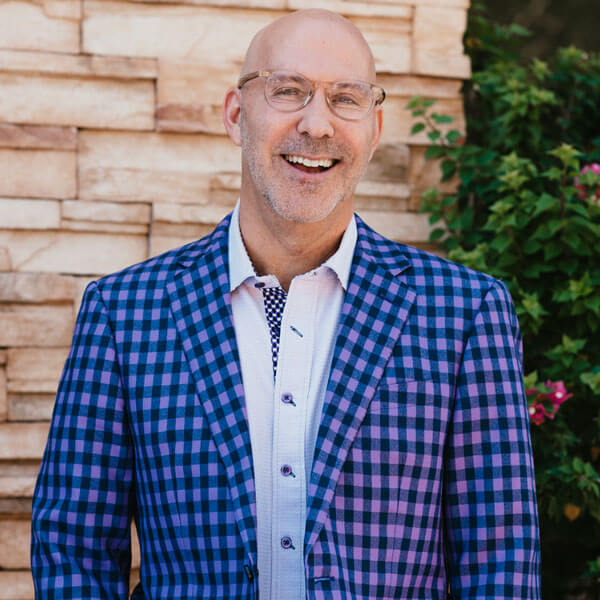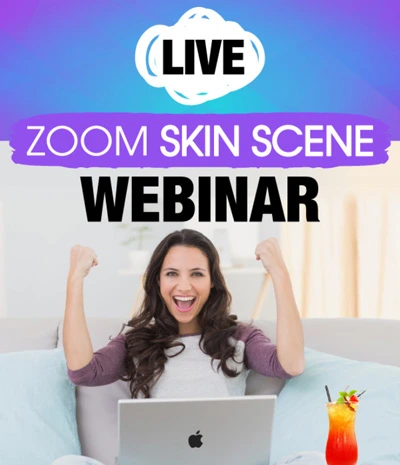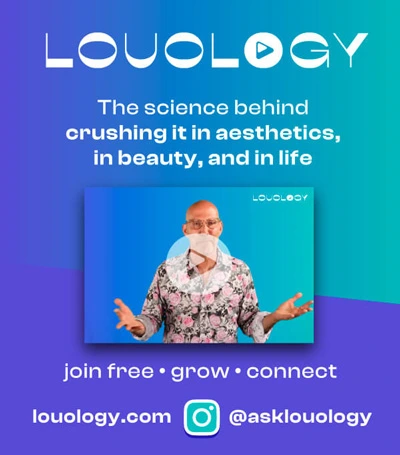How to Become a Medical Aesthetician
In this edition of the Pursue Your Passion Podcast series, Louis joins Claire to discuss her time spent learning how to become a medical aesthetician.
“Hey, I’m Louis the Laser Guy, and welcome to my podcast, ‘Pursue Your Passion.’ Join me on my journey as we discover how estheticians, nurses, physicians, and complete career changers are living their passion in this booming billion-dollar medical aesthetics industry.”
Claire’s Journey: Learning How To Become a Medical Aesthetician
Claire’s career journey started with working as a nurse in general medical surgery. She worked as a nurse for four years prior to her dive into learning how to become a medical aesthetician. Claire states, “It has always been something that I’ve been kind of interested in…I just wasn’t feeling fulfilled in my job.”
Burnout & Compassion Fatigue
For Claire, the burnout was very real and the hours were not great. Claire worked “50% days, 50% nights,” so it was difficult for her to adjust her schedule back and forth, only increasing her fatigue. Burnout is a syndrome defined by a type of stress reaction within the body that results from chronic work environment stress. It makes life unmanageable for the person experiencing it.
Moreover, burnout can lead to an issue like compassion fatigue. Compassion fatigue is developed when you are working day-to-day dealing with another person’s trauma. For instance, those in the healthcare community commonly deal with compassion fatigue. These positions include but are not limited to, hospital nurses, therapists, and caregivers. More specifically, the jobs that have the highest rate of compassion fatigue are healthcare workers in oncology, emergency, pediatric hospice, and intensive care.
Compassion fatigue occurs when the patients that you care for and feel compassion for, begin to wear and tear on the body and the mind. When you take both the physical and mental exhaustion of burnout and add it to the mental exhaustion that exists in those with compassion fatigue, it churns out a very stressed individual. As well as that, compassion fatigue can affect one’s ability to perform their job or complete daily tasks temporarily. It’s important to recognize the signs of compassion fatigue and to take steps to alleviate it.
Signs of Compassion Fatigue
- A symptom of compassion fatigue is experienced in the individual through an inability or struggle to be productive. Dealing with this in the long term can lead to memory or cognitive issues.
- As well as that, an individual with compassion fatigue tends to bottle up their emotions, which in turn isolates them further from friends and family.
- Mood swings are present in those with compassion fatigue. Simply put, the individual would experience symptoms such as drastic mood changes, cynical thoughts, and a hot temper.
- Another sign of compassion fatigue is when an individual presents with experiencing detachment from relationships and one’s personal or professional life.
- Important to note, physical symptoms of compassion fatigue present as headaches, fatigue, changes in appetite, digestive issues, and exhaustion.
Compassion fatigue is a normal result of ongoing stress working in a caregiver’s position. It is essential that this is a time the individual practices kindness towards oneself. As well as that, speak up and express what you need out loud. Talking to others can help ease the burden upon your shoulders. It is important to consider what changes you can make to your environment to help improve burnout. One such change is a change of career.
Claire’s Career Change Began at National Laser Institute
Claire began her new career at National Laser Institute with cosmetic laser training. With this in mind, cosmetic laser training is a great way to begin your journey and discover how to become a medical aesthetician. Prior to Claire’s hands-on practice, her education included one to two days of didactic education. Following that, she dove into lasers such as ablative laser hair removal and non-ablative hair removal. As well as that, she learned laser tattoo removal.
When asked for her thoughts on the hands-on portion of the course, she replies, “I think that we were all kind of a bit nervous to jump in and start on the first patient, but once we did…I felt so comfortable, I knew this was what I was wanting to do and this is where my passion was.”
After National Laser Institute
In continuation, Louis asks Claire how long it took before she landed a job in medical aesthetic lasers. In response, Claire happily replies that “it was pretty quick. I think that having the National Laser Institute and the whole training on my resume definitely set me apart from other applicants”.
When Louis asks about Claire’s favorite treatment, she responds excitedly, “Oooh, I think laser hair removal. I have very dark hair, so personally, it’s a fave…I love doing it on people too.”
Making People Feel Good
Louis asks Claire, “When you were getting started, were you thinking it was going to be more of an anti-aging beauty business? When did you realize this business is really about building confidence and fostering positive self-esteem by making people feel good via the service?”
In response, Claire says that it definitely showed when she had a patient in her chair that was in tears about how good she made her feel after the treatment. “She had very low confidence in her skin to begin with and she was like, ‘You’ve just transformed my skin and I feel so much better.’ So I love that aspect because…when you are in the hospital, you care for people. You are making them feel better when they are sick of having their worst days. But in cosmetics, it’s also the same thing where we are making people feel great about themselves and feeling more confident.”
Louis replies with excitement, “You said the magic word, you said…you made her feel good. I always think of that quote by Maya Angelou. ‘I’ve learned that people will forget what you said, people will forget what you did, but people will never forget how you made them feel.’ If we could make people feel so good…with the bedside manner, not just with the schmoozing, with the relationship building. You build that bond and that connection is where they are loyal for life.”
When Louis asks Claire, “Do you like your Job?”, she replies, “I love my job. This is a fun side of nursing.” In addition, Louis wonders, “So you are not on call at three in the morning anymore?” Claire responds happily, “Nope.” In continuation, Louis asks, “So you don’t have to work on a Sunday?” Claire responds happily, “No.”
Wrapping Up
To wrap up, Louis asks Claire what sort of advice she could offer for people checking out how to become a medical aesthetician and learn laser aesthetics. Claire happily responds,
“Yeah, I get people messaging me with this question all the time. You know, I’m a nurse, and I’m wanting to get into this field. How do I do it? How did you do it?…you have to invest in yourself and where you want to be. Definitely put in the time, the money, and the effort. You might have to work two jobs, to begin with, or part-time…I think it pays off tenfold…I’m so thankful that I went to National Laser Institute and got that experience because I absolutely love my job now…it’s been great.”
To end the podcast, Louis responds joyfully, “It sounds like you are doing great and enjoying life and that is what it is all about. So I’m glad you are doing something you can have a passion for and enjoy and just want to talk about. So congratulations on your success…let’s stay in touch.”
National Laser Institute
Did you know that National Laser Institute sets the “Gold Standard” for medical aesthetics training? Moreover, National Laser Institute will give you the precise tools you need to succeed in your course to become a medical aesthetician. In addition, National Laser Institute provides continuing education credits for nurses, Nurse Practitioners, Physicians Assistants (PA), physicians, and other healthcare professionals.
Dive into a new career in the world of medical aesthetics and laser technologies. Take the chance, if you are feeling burnout at work, take the time to consider a career in medical aesthetics and laser technology. Moreover, not only will you have a career that you are passionate about and happy with, but you will make a change that turns out to be healthier for yourself.
Click here to watch the podcast series episode with Louis and Claire.
National Laser Institute will give you the proper medical aesthetics training and confidence that you need to succeed in the world of medical aesthetics.
“Finding your purpose isn’t only about making great money, it’s about so much more. It’s about tapping into your passions and chasing your dreams.” – Louis Silberman CEO

About the Author
Louis J. Silberman is the CEO and Co-Founder of National Laser Institute, the pioneer of the medical aesthetics training industry and the largest educator in the country. NLI also operates one of the busiest medical spas in the country, seeing up to 3,000 clients per month. Louis Silberman is also an entrepreneur who has been named Ernest and Young’s EY Entrepreneur of the Year Semifinalist.








